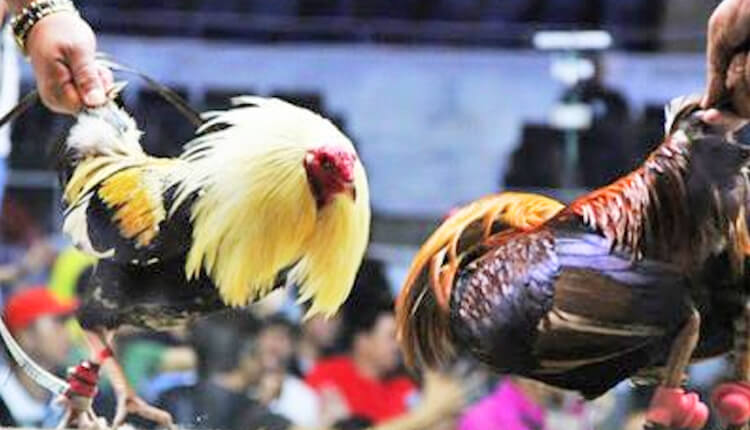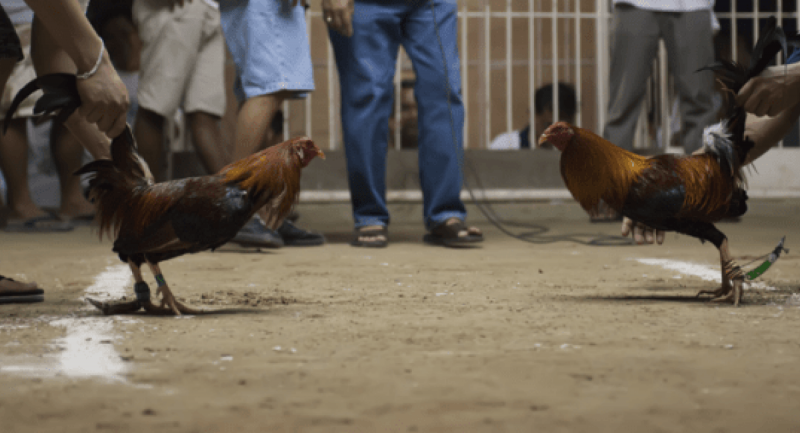Keys of the Sabong Grandmaster: Understanding the Art of Cockfighting
The complex globe of cockfighting, especially as practiced by the Sabong Grandmaster, offers a fascinating study in the assemblage of animal behavior, training approaches, and competitive approach. To really comprehend the subtleties of this art type, one have to discover just how the Grandmaster balances the physical and mental facets of fowl training while browsing the moral factors to consider integral in this conventional practice. What are the crucial insights that separate the phenomenal from the common in this realm? Understanding this can redefine one's point of view on the sport and its experts.
Background of Cockfighting

As the centuries progressed, cockfighting spread across numerous continents, adapting to regional customizeds and social characteristics. In middle ages Europe, it gained popularity amongst the nobility, who regarded it as a screen of wide range and condition. By the 17th century, the sporting activity had established itself in England, bring about the formation of formalized laws and guidelines.
In the Americas, especially in the Caribbean and the Philippines, cockfighting tackled unique qualities influenced by early american histories and aboriginal techniques. Today, while the sporting activity remains debatable and encounters legal challenges in lots of areas, its historic relevance remains to stimulate conversations about animal civil liberties, cultural heritage, and social values. The advancement of cockfighting reflects wider styles of human interaction with nature and the complexities of tradition.
Comprehending Fowl Actions
Comprehending fowl actions is essential for those involved in the sporting activity of cockfighting, as it straight affects performance, wellness, and training. Roosters show a series of actions that can indicate their physical and psychological states. Significantly, aggression, territoriality, and social power structure play substantial duties in their temperament.
Aggressiveness is an all-natural impulse in roosters, primarily driven by the need to assert dominance. Observing interactions among roosters can reveal their position, which is critical for managing their setting. A positive fowl shows a more assertive posture, while a passive one might reveal indications of stress or fear, such as crouching or staying clear of eye get in touch with.

Training Methods for Champions
Reliable training methods are critical for developing champ fowls that master the affordable field of cockfighting. A methodical method ensures that each bird reaches its full potential, incorporating physical fitness with mental stamina.
To start, her explanation developing a constant training regimen is essential - Sabong Grandmaster. This includes everyday exercises that enhance toughness, dexterity, and endurance. Routines may include regulated sparring sessions with both real-time and synthetic challengers to mimic competition, allowing fowls to sharpen their combating skills in a safe environment
Integrating agility drills, such as barrier programs and leaping workouts, significantly enhances a rooster's physical capacities. Furthermore, introducing different surfaces and surfaces can enhance their adaptability during fights.
Psychological training must not be overlooked. Acquainting the birds with the noises and sights of an affordable atmosphere can minimize tension and anxiety on battle day. Moreover, favorable reinforcement techniques, such as satisfying desirable behaviors, can instill self-confidence in the roosters.
Lastly, keeping a calm and assertive visibility throughout training sessions cultivates trust fund between the handler and the fowl, essential for accomplishing ideal performance. Together, these techniques form a comprehensive training regimen that cultivates champions ready to stand out in the field.
Wellness and Nourishment Essentials

Integrating a mix of barley, wheat, and corn offers essential carbs, while healthy protein resources such as fish meal, soybean meal, or insects sustain muscle advancement and recovery. Furthermore, incorporating fresh fruits and veggies can improve the total dietary profile, supplying anti-oxidants that improve the body immune system.
Hydration is just as important. Accessibility to clean, fresh water ought to be a concern, as dehydration can severely influence efficiency (Sabong Grandmaster). Routine health check-ups are vital to keep an eye on for any type of possible health problems or parasites that can endanger a rooster's problem
In addition, the timing of feed is vital. Providing nourishment at ideal periods makes sure that fowls preserve energy levels throughout their training and healing phases. By concentrating on these health and nourishment basics, sabong enthusiasts can assist their roosters achieve optimal efficiency in the affordable field.
Approaches for Effective Matches
Success in cockfighting rest on a combination of calculated preparation and in-ring tactics. Reliable match approaches start long before the battle, with cautious option of the rooster. Dog breeders ought to prioritize hereditary attributes such as endurance, hostility, and resilience, ensuring that the chosen bird shows a solid lineage of efficiency.
Training is vital; roosters must be conditioned via a program that includes physical exercise, competing with other birds, and direct exposure to various settings. This preparation not only develops strength yet also enhances the bird's flexibility to different challengers.
Throughout the match, a handler needs to employ keen observation and quick decision-making. Recognizing the challenger's techniques permits timely adjustments, such as changing the fowl's position or urging much more hostile habits. Timing is important; recognizing when to urge or limit the bird can indicate the difference between triumph and defeat.
Lastly, preserving a tranquil behavior during matches fosters self-confidence in the fowl. A well balanced method, incorporating both physical and mental readiness, inevitably brings about successful results in the field, showing that proficiency in cockfighting is as much concerning technique as it has to do with the birds themselves.
Final Thought
The mastery of cockfighting, as exhibited by the Sabong Grandmaster, hinges on an extensive understanding of fowl habits, reliable training techniques, and optimum health and nutrition. Eventually, the secrets of the Sabong Grandmaster lie in the harmonious equilibrium of these elements, making certain the continued tradition of this ancient sporting activity.
To genuinely comprehend the subtleties of this art type, one have to check out exactly how the Grandmaster harmonizes the physical and mental aspects of rooster training while navigating the ethical considerations integral in this conventional method.Comprehending fowl behavior is necessary for those entailed in the sporting activity of cockfighting, as it directly influences efficiency, training, and health.Preserving ideal health and nourishment is crucial for making certain that fowls reach peak performance in the cockfighting field. Providing sustenance at ideal periods ensures that fowls preserve energy degrees throughout their training and recovery stages.The proficiency of cockfighting, as exhibited by the Sabong Grandmaster, hinges on a comprehensive understanding of rooster behavior, efficient training techniques, and optimum wellness and nutrition.